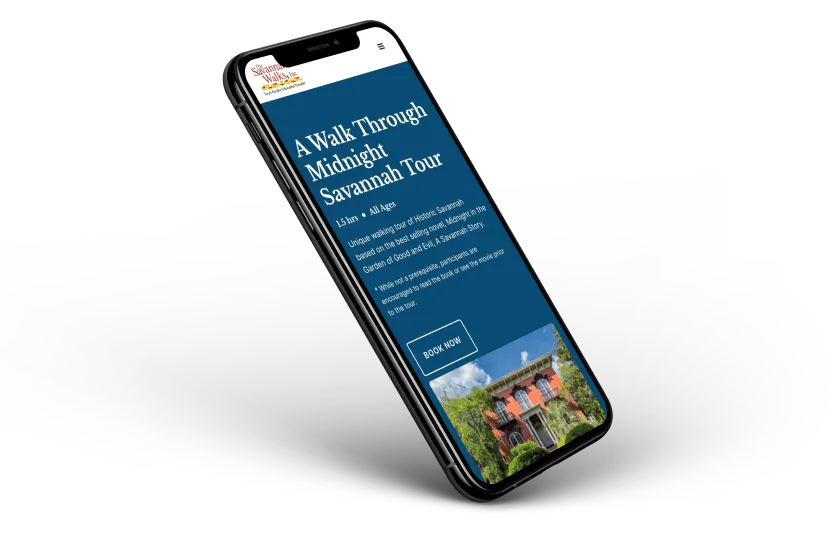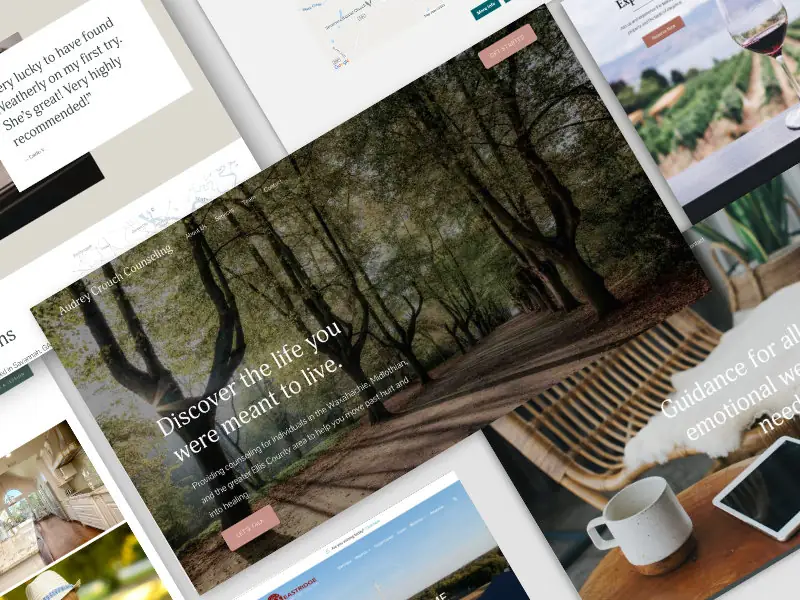Business
What's the Difference Between Web Design and Web Development? A Business Owner's Guide

In today's digital era, a robust online presence is crucial for any business.
But often, business owners find themselves wondering, "Is Web Design and Web Development the Same?"
Understanding the distinction and synergy between these two fields is essential for making informed decisions about your business's online strategy.
What is Web Design?

Web design is the process of creating the visual and interactive elements of a website. It focuses on aesthetic factors like layout, user interface, and visual imagery, aiming to provide an engaging and intuitive user experience.
What tools and technologies are used in Web Design?
Web designers use a variety of tools to bring their creative visions to life. The choice of tools depends on the specific needs of the project and the skills of the designer.
Figma
A versatile web-based design tool that allows for collaborative design and prototyping.
It is known for its user-friendly interface and robust functionality, enabling designers to create detailed wireframes, prototypes, and high-fidelity designs.
Figma's real-time collaboration feature is particularly beneficial for teams working remotely.
Adobe Photoshop
A staple in the design industry, Photoshop offers extensive capabilities for creating and editing images and graphics.
It is particularly useful for crafting detailed visual elements, adjusting photos, and creating composite images.
Photoshop's wide range of brushes, patterns, and effects allows for immense creativity and customization.
Adobe Illustrator
Ideal for creating vector-based graphics, logos, and illustrations.
Unlike Photoshop, which is raster-based, Illustrator's vector-based approach ensures that designs remain crisp and scalable, making it perfect for logo design and branding materials.
HTML & CSS
While traditionally seen as part of web development, basic knowledge of HTML (Hypertext Markup Language) and CSS (Cascading Style Sheets) is increasingly important for web designers.
These technologies enable designers to understand how their designs will be implemented on the web and make minor adjustments themselves.
These tools, along with an eye for aesthetics and user-centric design principles, empower web designers to create functional, visually appealing, and engaging websites.
Why Should Web Design Matter to a Business Owner?

Creating a Strong First Impression
In the digital world, your website often serves as the first interaction consumers have with your business.
Effective web design goes beyond visual appeal; it's about making a lasting impression.
This involves creating a website that is not only visually stunning but also intuitive and user-friendly.
A well-designed website captures attention and encourages visitors to explore your products or services further.
Conveying Brand Identity
Your website is a powerful tool for storytelling and branding. Through thoughtful web design, you can effectively communicate your brand's values, ethos, and unique selling propositions.
Consistent use of:
- Colors
- Fonts
- Imagery
helps in creating a cohesive brand experience that resonates with your audience.
This consistency in design reinforces your brand identity and helps in building trust with your audience.
Enhancing User Experience
A good design is key to a smooth user experience.
This includes:
- Easy navigation
- Fast loading times
- Mobile responsiveness.
By prioritizing these elements, you ensure that visitors can easily find what they're looking for, which can significantly reduce bounce rates and increase the likelihood of conversions.
SEO and Visibility
Search engines favor websites that offer a good user experience.
Elements of web design, such as mobile responsiveness, optimal loading speeds, and user-friendly navigation, directly impact your site’s SEO ranking.
A well-designed website helps in improving your visibility on search engines, leading to more organic traffic.
Competitive Edge
In a crowded online marketplace, having a website that stands out is crucial.
A unique and compelling web design can set you apart from competitors. It's not just about looking different; it's about offering a memorable experience that encourages visitors to choose you over others.
Encouraging Customer Engagement and Conversion
A thoughtfully designed website guides visitors through a journey from the moment they land on your page to the point of conversion.
Whether it’s signing up for a newsletter, making a purchase, or contacting for more information, good design can influence and facilitate these actions, ultimately driving business growth.
In summary, for a business owner, investing in web design is not just an aesthetic choice, but a strategic business decision.
It plays a critical role in:
- Making a positive and lasting impression
- Conveying your brand's message
- Enhancing user experience
- Improving SEO ranking
- Standing out in the competitive market
- Driving customer engagement and conversions.
What is Web Development?

Web development, on the other hand, is the backbone that brings web design to life. It involves the coding and programming necessary to ensure website functionality.
From simple webpage scripts to complex e-commerce platforms, web development is what makes a website functional, responsive, and efficient.
What are the Differences Between Web Design and Development?
Understanding the differences between web design and web development is crucial.
Web Designers
Web designers focus on the visual and experiential part of the website, using tools like Photoshop and Figma to create layouts and graphic elements.
Web Developers
Web developers, conversely, use programming languages to build the underlying structure of the site.
Both roles are essential, but they focus on different aspects of website creation.
Combining Design and Development: The Unicorn Approach
Enter the 'unicorn' - a term in the industry for professionals who are skilled in both web design and development.
At CL Creative, we embody this approach by using Webflow, a platform that seamlessly blends design with development.
Our ability to provide both web design and web development allows us to help business owners get their projects off the ground faster, avoiding the need to coordinate between separate designers and developers.
Case Study: CL Creative's Approach

Take, for example, a recent project where we redesigned an e-commerce website for Fluid Line Solutions.
Our team used Figma to create a captivating design, which was then brought to life using Webflow and Shopify.
This approach not only expedited the development process but also ensured a cohesive final product that perfectly aligned with the client’s vision.
Industry Perspectives
CL Creative is not the only agency that is focusing on web design and development. It is becoming an industry trend.
Insights from industry leaders like Upwork, HubSpot, and Coursera reveal a dynamic field where the boundaries between design and development are becoming increasingly blurred.
Upwork's Observations
- Freelancing Trends: Upwork, a leading platform for freelance professionals, notes a growing demand for individuals who can bridge the gap between design and development. Clients increasingly seek professionals who possess a mix of both design sensibilities and technical know-how.
- Adaptive Skill Sets: The platform also highlights a trend where designers are learning to code, and developers are gaining design skills, making them more versatile and marketable.
HubSpot's Insights
- Marketing and Web Experience: HubSpot, known for its inbound marketing and sales software, emphasizes the importance of cohesive web experiences. The convergence of design and development skills is crucial in creating websites that not only look great but also perform effectively in marketing and sales contexts.
- User-Centric Design: They also note the increasing focus on user-centric design in web development, a traditionally technical field, underlining the importance of understanding user experience in both domains.
Coursera's Educational Perspective
- Academic Shifts: Coursera, an online learning platform, observes shifts in academic curricula to accommodate the merging paths of design and development. Courses now often include elements of both disciplines to prepare students for the multi-faceted nature of the industry.
- Lifelong Learning: They stress the importance of continuous learning and adaptability in the tech field, encouraging professionals to stay abreast of both design trends and technological advancements.
Growing Overlap in Skills
- Versatility and Collaboration: The industry's evolution has led to a scenario where being skilled in both design and coding is highly advantageous. This versatility facilitates better collaboration and understanding within teams, leading to more cohesive and efficient project outcomes.
- Hybrid Roles Emerging: The lines between designer and developer roles are blurring, with many professionals now identifying as 'full-stack designers' or 'designer-developers', indicating their proficiency in both areas.
When to Choose a 'Unicorn' for Your Project
For small to medium-sized projects, choosing to us a 'unicorn' can be highly beneficial.
- It simplifies communication
- Ensures a unified vision
- It can be more cost-effective.
In larger projects, while the expertise of a 'unicorn' is invaluable, having team members with specialized roles might become necessary to handle the complexity and scale effectively.
Conclusion
Understanding the difference and interplay between web design and web development is key for business owners looking to establish or enhance their online presence.
With agencies like CL Creative, which harmonize these two disciplines through tools like Webflow, businesses can enjoy:
- Streamlined processes
- Quicker market entry
- Cohesive project outcomes.
In the end, whether you choose a specialized designer, developer, or a 'unicorn', what matters most is aligning your choice with your project's needs and your business goals.
If you need a unicorn for your next project, reach out to us here at CL Creative.
End to End Webflow Design and Development Services
From Web Design and SEO Optimization to Photography and Brand Strategy, we offer a range of services to cover all your digital marketing needs.

Webflow Web Design
We design custom Webflow websites that are unique, SEO optimized, and designed to convert.
Webflow Maintenance
Gain peace of mind knowing that a Webflow Professional Partner is maintaining your website.

Claim Your Design Spot Today
We dedicate our full attention and expertise to a select few projects each month, ensuring personalized service and results.






